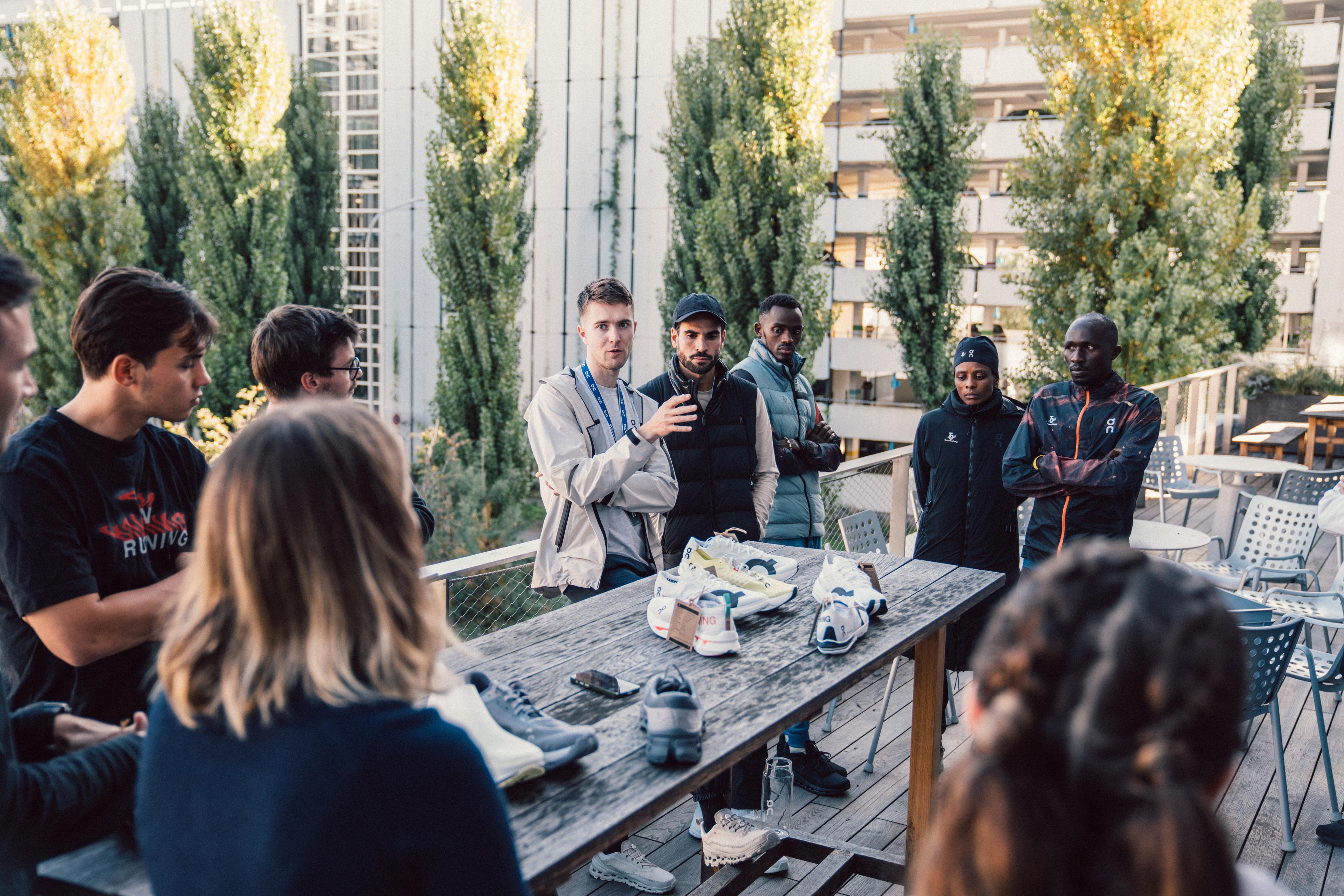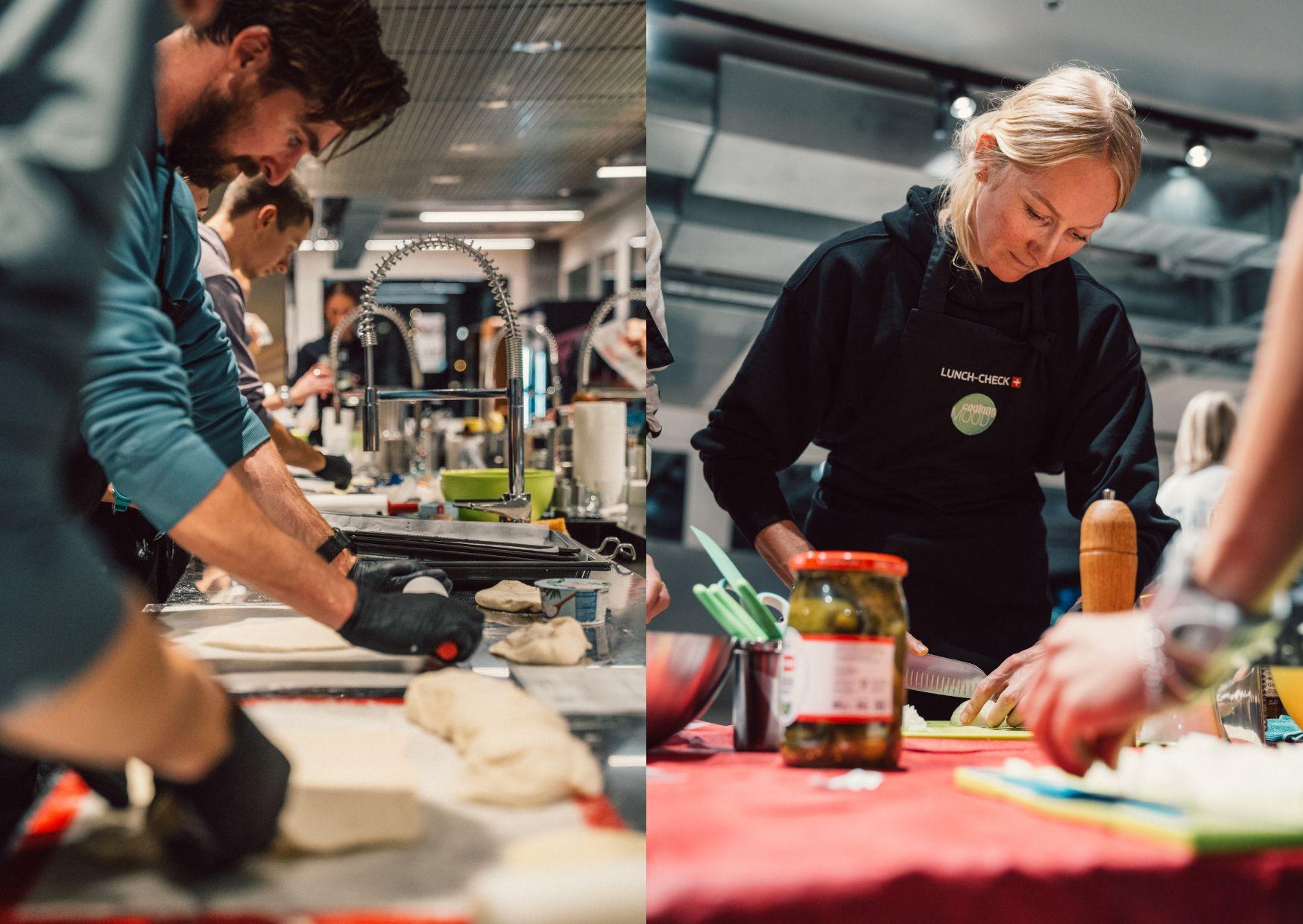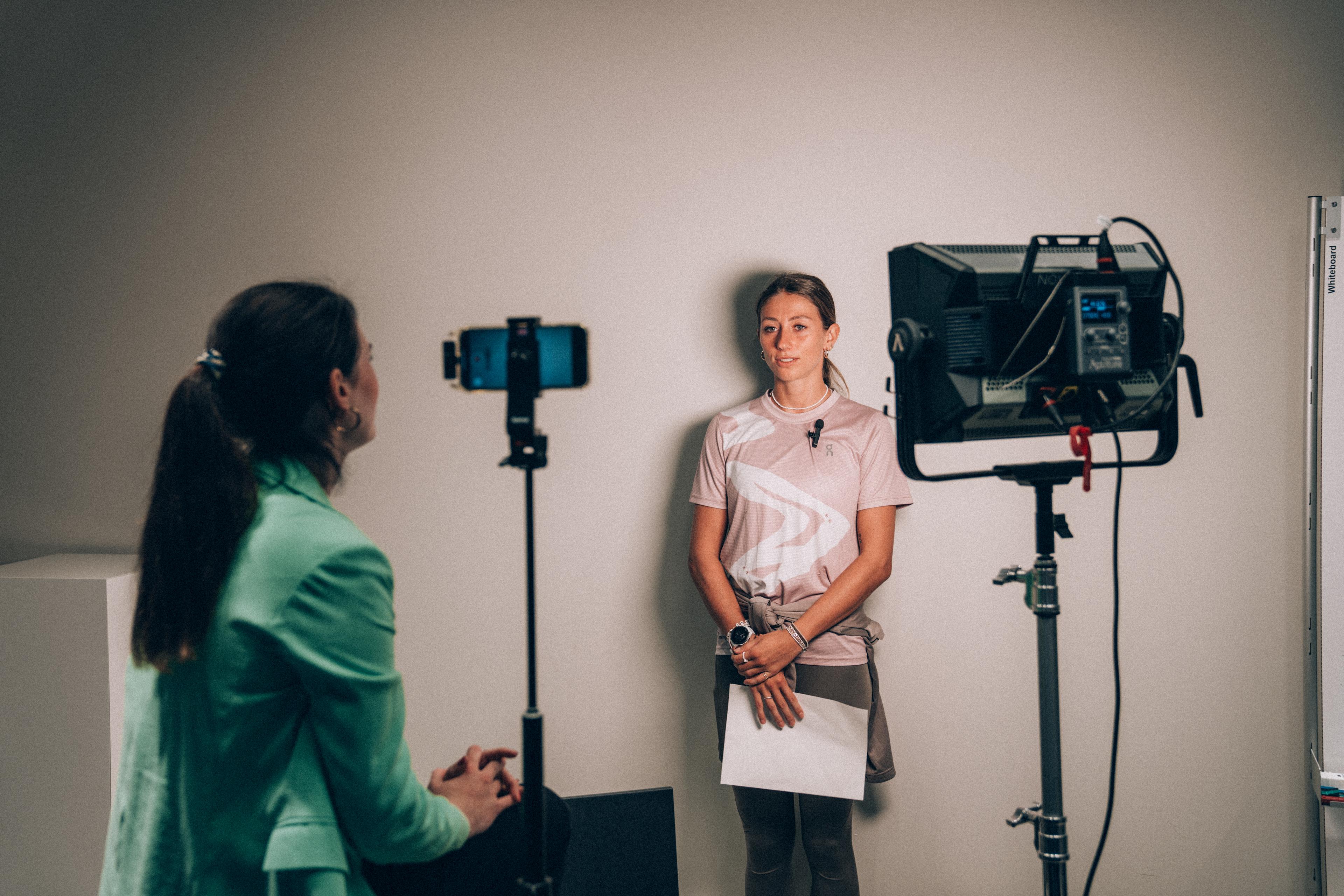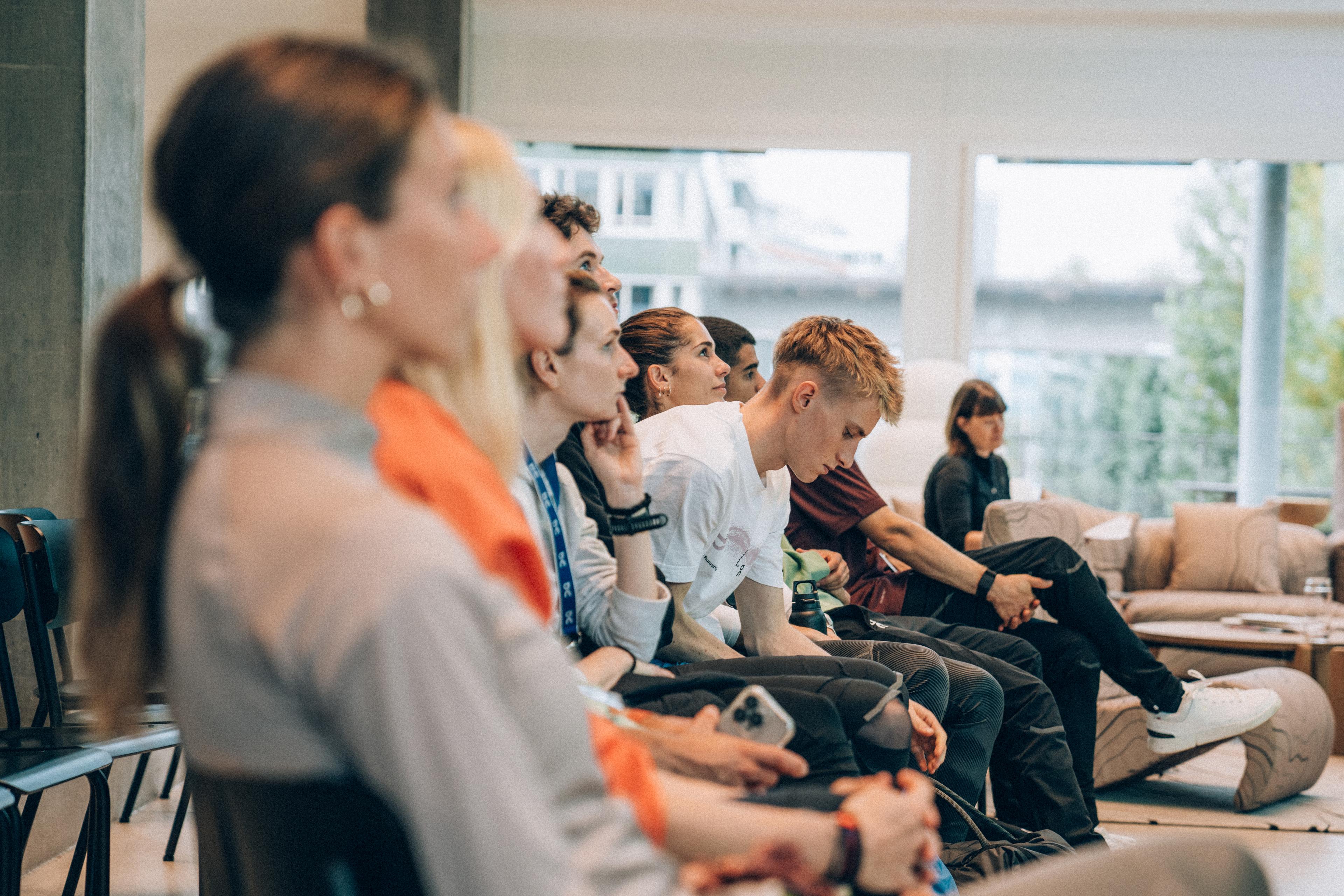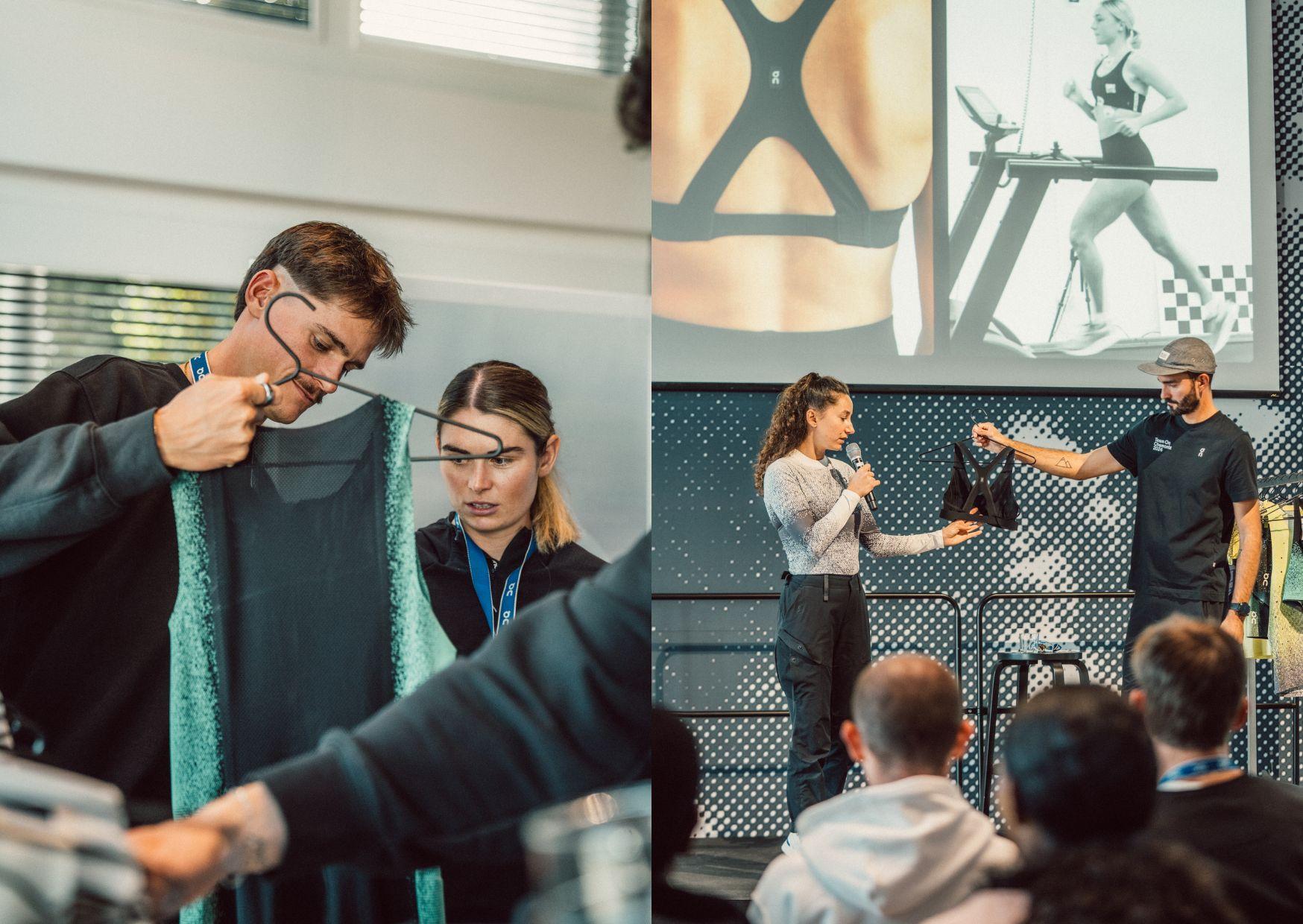The Athlete Compass program is a core component to On’s holistic approach to athlete partnerships – designed to give personalized guidance and expertise for On athletes, to support them across all aspects of life. As part of the program, we recently developed a mobile app designed to connect our athletes with essential resources based on their needs, from sports psychology to nutrition advice, personal branding, career development, and more.
An exercise in collaboration, the Athlete and Technology teams brought their diverse perspectives and skills together to create a specialized product packed with utility. Some of the team behind the project – Alexey Galiullin, Head of Engineering; Elias Zoll, Product Manager; Julia Fink, Senior Specialist, UX Researcher; Nicola Spirig, Senior Specialist – Athlete Compass; and Noemí Haag, Senior Specialist – Athlete Compass talk through their cross-functional project.

Walk us through the initial conversations about developing the app.
Nicola Spirig, Senior Specialist – Athlete Compass :
The Athlete Compass program was shaped by a big survey sent to all the sponsored athletes from On. At the time, I was still an active athlete myself and remember thinking how important the outcome of this survey would be and how unique it was that On, as a brand, actually cared for their athletes' needs outside of products. In summary, the survey assessed where athletes needed support – areas like sports psychology, a medical network, nutrition advice, financial advice, career planning or personal branding and media. I’ve since transitioned to being a team member at On and working with other athletes, leading the build of additional support for our sponsored athletes. The data from this survey showed us that our 200+ athletes are all in very different situations and stages of their careers and really need tailored support. So we started to develop a wide range of offers athletes can choose from, making sure our athletes can benefit and get supported in the right way. As the program grew and we were able to produce more and more resources, exactly how athletes had access to them became an important task.
Noemí Haag, Senior Specialist – Athlete Compass:
At this point, the Athlete Compass app came into play. The goal was to centralize everything we offer in one easily accessible place. We understand schedules vary immensely from sport to sport, and from athlete to athlete, and so we wanted to enable flexibility with an option to access these resources at any time – even when traveling with an offline mode – and encourage self-led support.
Can you describe how the app is organized? Any features you’d like to highlight?
Elias Zoll, Product Manager:
Our approach to developing the app was centered on creating a seamless and intuitive user experience. We concentrated on two core functionalities: Resources and Events.
Our Resources section features content in three formats: articles, guidelines and offers – all categorized into six different pillars for simple discovery. We made the layout clean and simple so the information is easy to consume. Other materials, like PDFs and videos can be attached to provide more depth.
In the Events section, athletes can explore and book opportunities like webinars or coachings directly within the app – receiving push notification reminders – and can add events to their personal calendars with a single tap.

Julia Fink, Senior Specialist, UX Researcher:
When asked, athletes imagined the app as their “one source of truth” for all things On, and that served as the foundation for how we designed it.
To understand which features and topics were most important, and therefore needed to be prioritized and created first, it was really helpful to get feedback from athletes directly, through informal conversations, structured interviews or surveys. So every feature built answered a specific need.
Another thing that came out as important was how the app had the power to streamline communication with athletes, helping with their organization as well. Like the push notifications Elias mentioned, simple features like the “add to calendar” or “reminder” can go a long way.
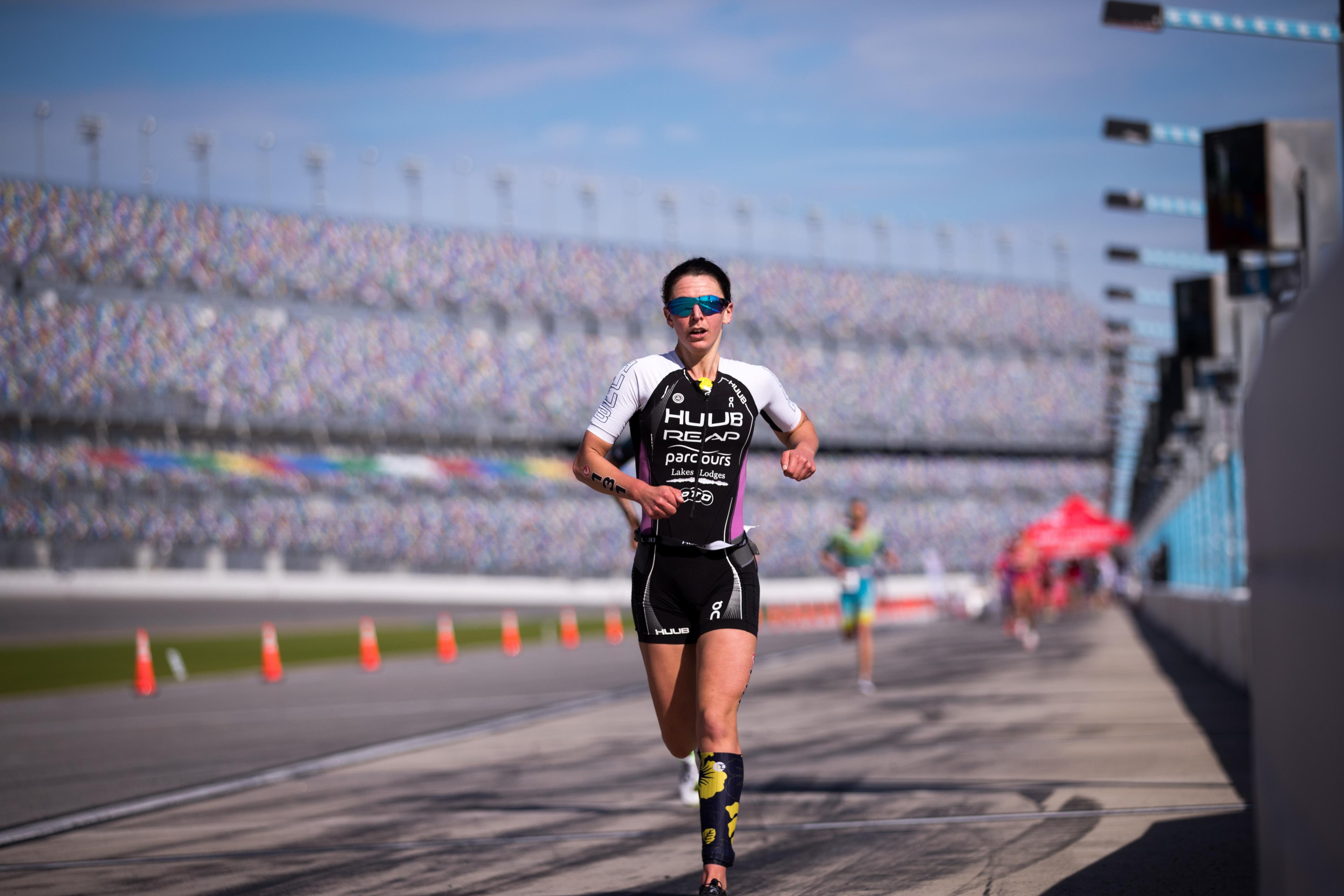
“Looking at the app format, having all that information in one place and visually being able to keep a kind of a diary that is going to be really helpful moving forward for the Athlete Compass.”
– Fenella Langridge, Triathlete
What were the biggest technical challenges and how did the team overcome them?
Alexey Galiullin, Head of Engineering:
When it came to developing the app, the biggest challenge was time. We were ambitious when defining timelines so we could have this ready for our athletes as soon as possible, which means that the team worked with short turnarounds throughout the project.
With quick decision-making from our Senior Lead Staff Software Engineer, Gabriel Heiler, we were able to build a complex back-office that allowed for all our resources to be uploaded, and our Lead Software Engineer, Amir Hosein Asefi Nejad, almost single-handedly assembled the frontend of the app. And so, the engineering team, while lean, worked tightly together, whilst simultaneously delivering and helping on multiple other fronts.
Reflecting on the project, the planning and preparation, combined with constant feedback from Elias, Noemi, Nicola and Julia were instrumental in getting this over the finish line.
Between the tech teams, the athlete team, and the athletes themselves, can you describe how the teams worked together?
Julia:
The entire app development was a highly collaborative effort between different teams within On and actively involving the athletes themselves – an approach that is called “co-creation”.
Why is this important in the context of the Athlete Compass? Building an app like this from scratch is really complex, and it’s key to involve the different teams early on to understand requirements and limitations, get feedback on ideas and feasibility from diverse perspectives and meet legal requirements where they exist.
The collaboration with the users – in this case, the athletes – was again crucial to make sure we were actually adding value with the app and allowing them to be actively involved in the creative process – recalling again the conversations, feedback surveys, forms and interviews.
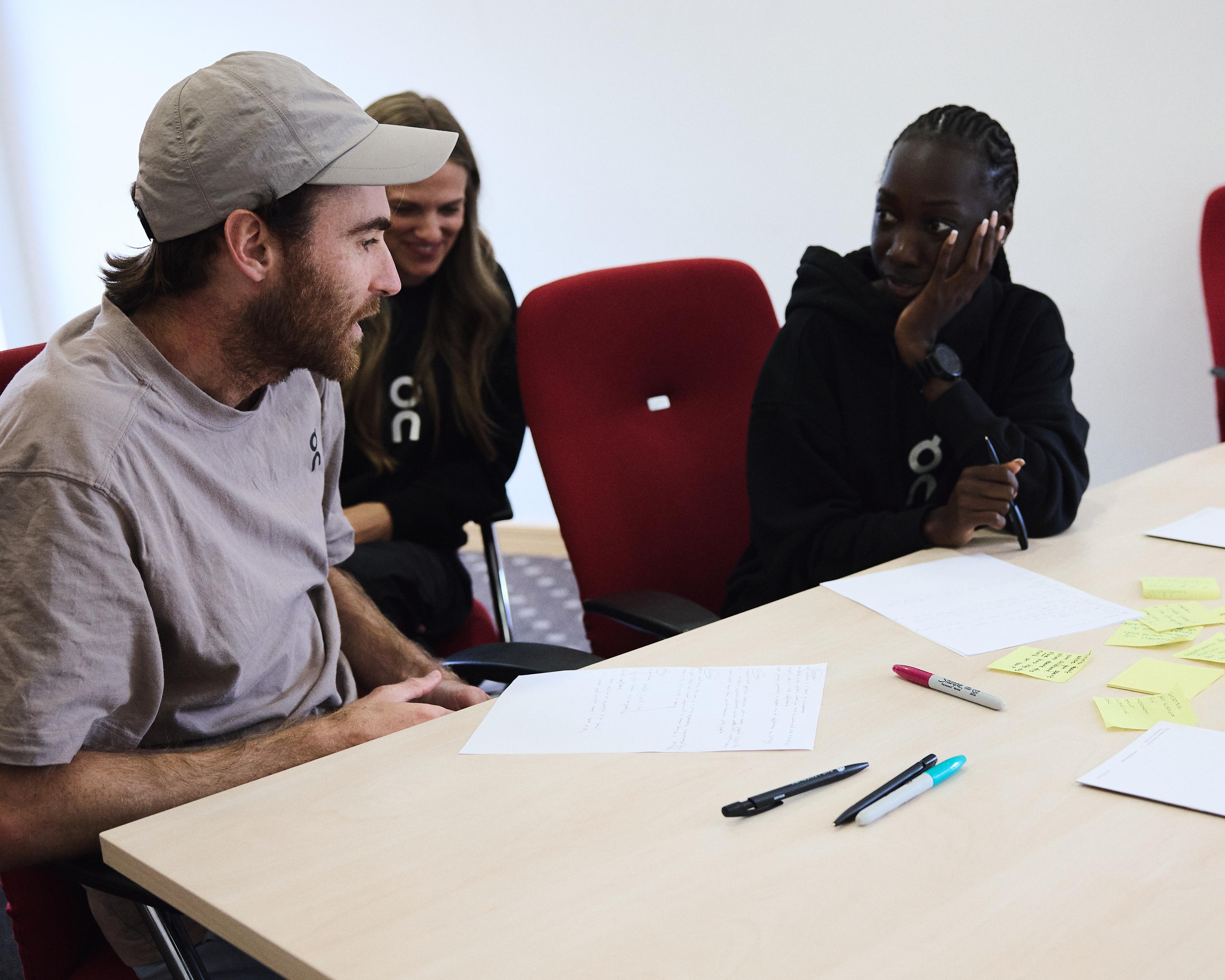
Elias:
We’ve built the necessary bridges between the different teams involved through regular check-ins, updates, calls and sprint sessions, allowing transparency throughout the entire process – from the initial conversations with Noemi and Nicola to getting the design right with Julia and also Kris Hedstrom (Head of UI/UX Design) and Nico Nydegger (Senior UI/UX Specialist), and developing it with Alexey and the engineering team. And while each area brought their expertise to the table, everyone was quick to work together and support each other as we were shaping the final product.
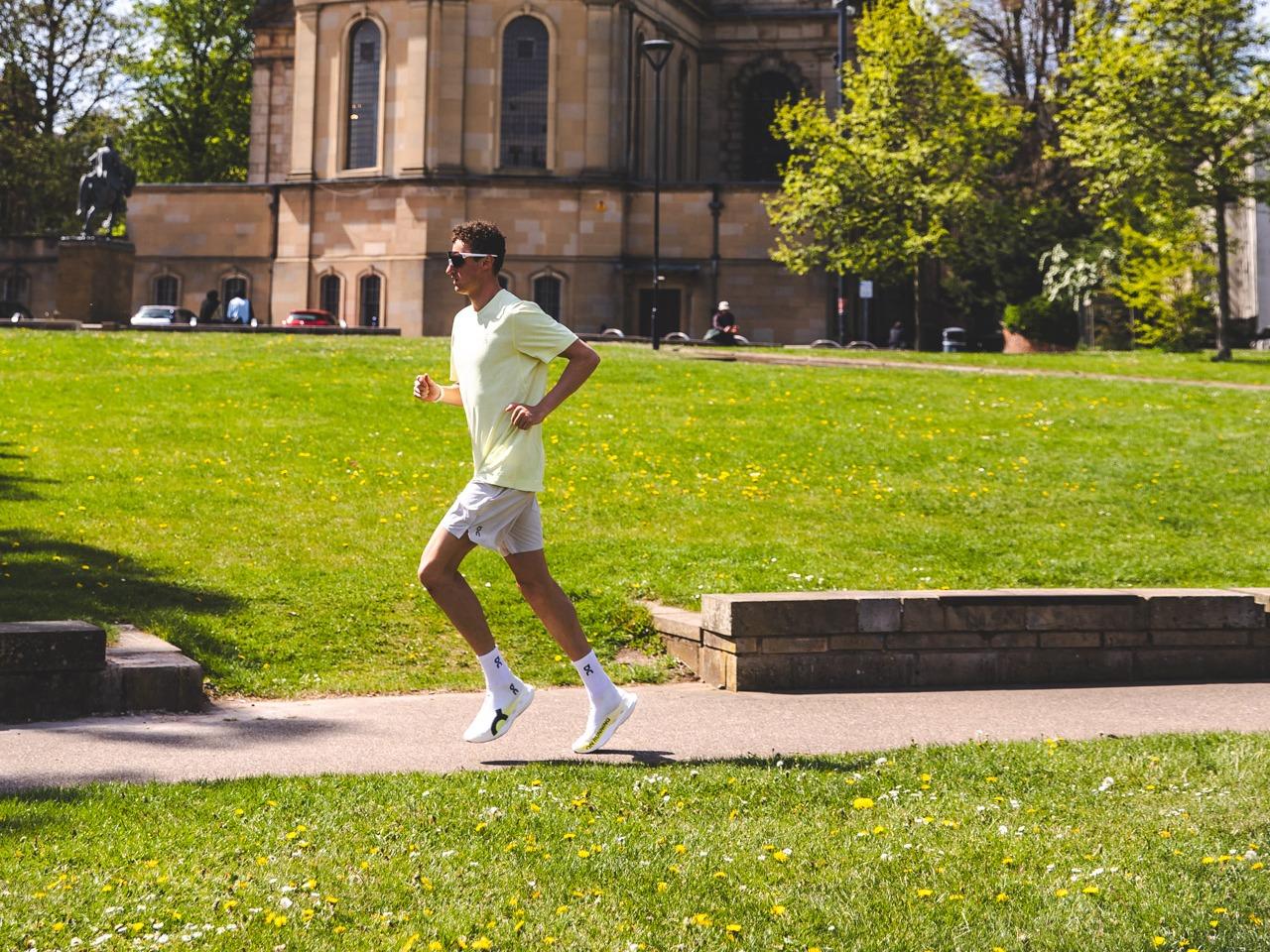
"It was a real privilege to be involved in the early stages of the app. It’s been exciting to see it grow, and I’m proud to have played a small part in helping shape something so useful for athletes."
– Hugo Milner, Triathlete
Can you walk us through the app testing and launch?
Noemí & Elias:
The pre-development interviews with athletes and the project team helped us create a feature wishlist. Once we had what it’s called an MVP (Minimum Value Product) meaning an initial version of the app that included the core features, we kicked off a beta testing phase, internally first with a group of team members and then with a limited number of athletes for feedback – which ultimately culminated in the official launch to all athletes in April 2025.
How are you measuring success? What are some of the ways you see the app evolving?
Noemí :
In a nutshell, success means athletes are using the app and engaging with our offers because they match their needs. The feedback we keep collecting will allow us to continue to provide tailored content and recommendations. The goal is to ensure the app not only remains relevant, but becomes a go-to hub for athletes, a personalized dashboard they can access from the moment they join the brand, supporting them throughout their journey both on and off the field.
Alexey:
As Noemí said, app adoption really is the main measure of success. The more athletes find it useful in their day-to-day life, the more successful it is. And so we are looking at things like daily and monthly active users, how long users spend per session and how often users return. From a more technical point of view, we are also looking at making sure the app stays convenient for the users, measuring performance, namely through crash rate, battery usage and load time.
Elias:
All the metrics we’re actively measuring help us to continue to improve or reiterate so the Athlete Compass app stays relevant and meaningful to our athletes. We’re excited for all the new and improved features that Noemí teased and are already thinking about what comes next.
